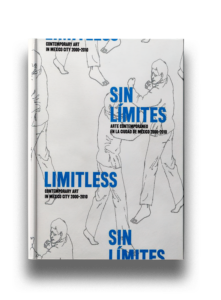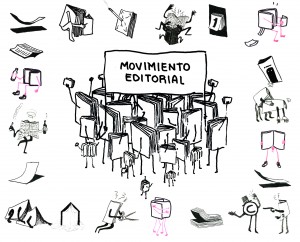Year
2018
Publisher
InSite Casa Gallina (Howard Karno Books)
Author
Pablo Lafuente
Annotation
inSite/Casa Gallina is one of the most committed, experimental and dynamic collective undertakings created in the last decade in Latin America. Casa Gallina’s activities responded to the demands and desires of the people who live in, occupy and in different ways use the Santa María la Ribera neighbourhood in Mexico City. Experiences of the Common Good presents a memory of this independent space since its foundation: their activities and collaborations, but also the names of individuals and collectives that worked with Casa Galina fostering new collective and social choreographies that had a meaningful impact on the way of life of the neighbours and local users.
Miguel A. López
We distrusted much of the 'revolutionary mimicry' usually displayed by a lot of 'socially committed' art. And how that outsourcing of the social by art has turned it into a museified representation of an expectation of change, emptied of its transformative potential. A sort of parodic staging within everyday conflict, without collective energy or personal rootedness in the risks or the socio-political convulsions of what is being referenced. Of course, that outsourcing of the social serves to 'energize' that expectation of transgression that a lot of artistic works or curatorial intentions embody as a simulacrum. A self-promoting, politically correct banner, in these 'creative' times. As a team, that was our greatest concern. How could we initiate another chapter of inSite (with its global artistic halo) without faking a real anchoring in a neighborhood and guaranteeing that this rootedness would not turn into a cultural gentrification of the area? How could we tear it away from the spectacular of the contemporary scene and the statements of 'otherness', without being content with aesthetically enlivening a vulnerable environment or cloning, in museums, the story of a social friction that surpasses us and that perhaps we would never completely belong to? How were we going to be sure that what was achieved by the neighborhood and the team would take off and continue growing as a living social platform, even beyond its original brand, its imposed temporality, and the executives’ expectations for 'their' finished product? How could we make the patrons also change their vision of commitment in this process, accepting that the project might not support their potential benefit as collectors or visionaries who are also interested in fame and networking in the global art scene? How were we going to fit into grant and public support funds aimed at 'contemporary art' or in the turbid marketing policies that overlap with the reductionist label of a 'social interest' business that is common in Mexico?"










